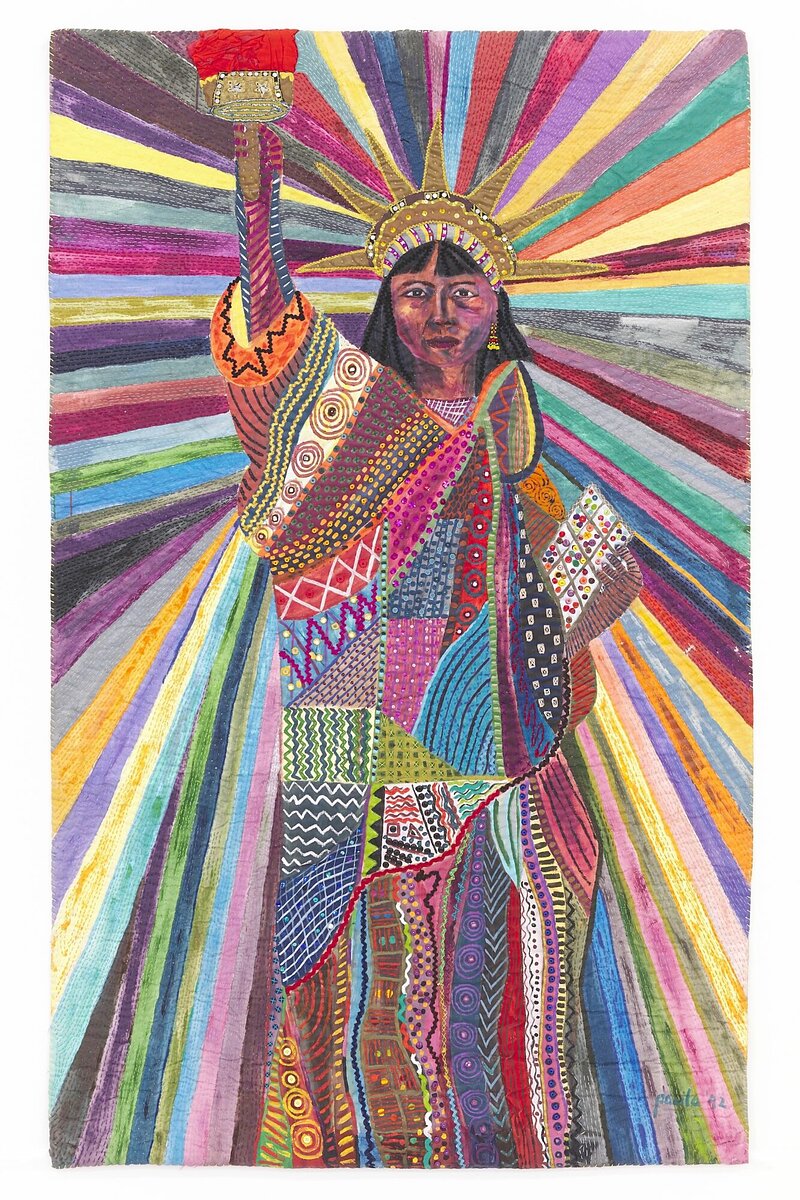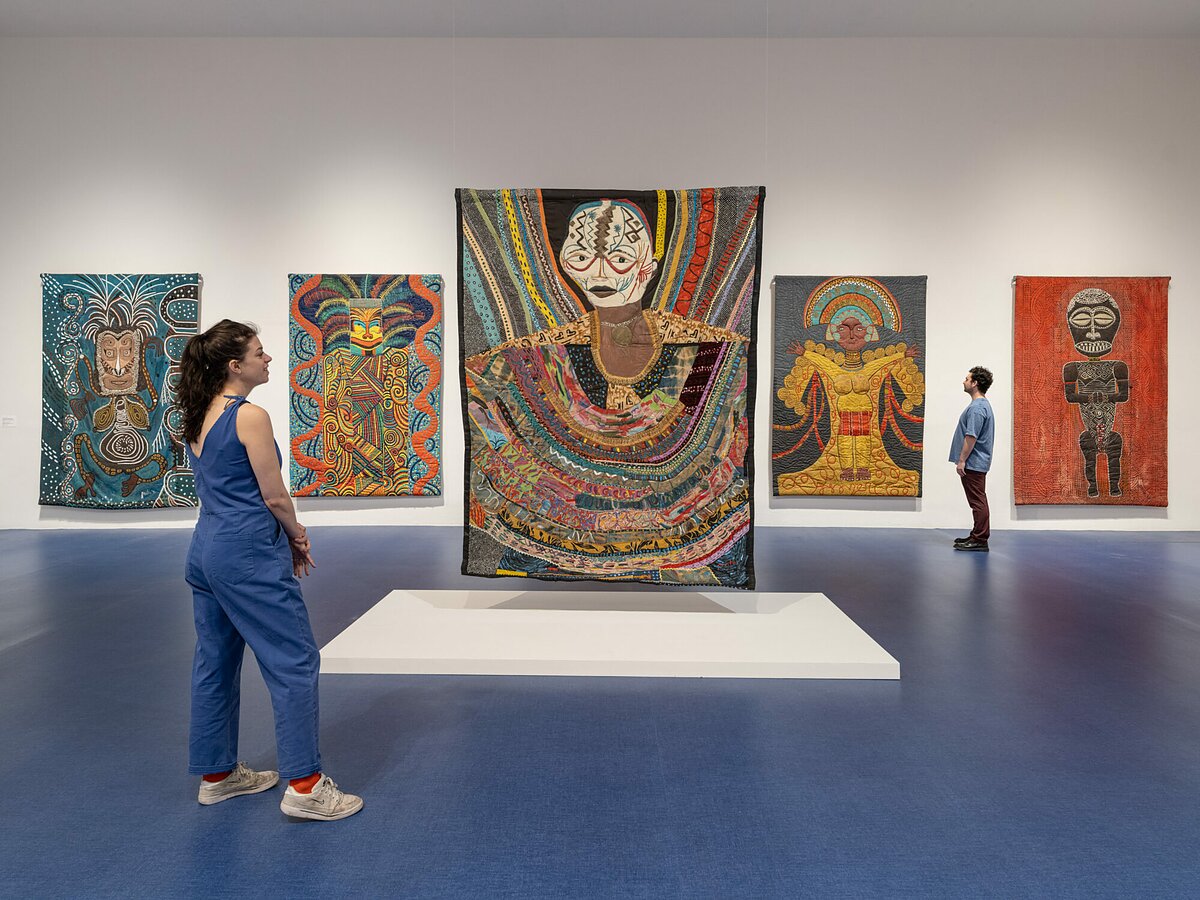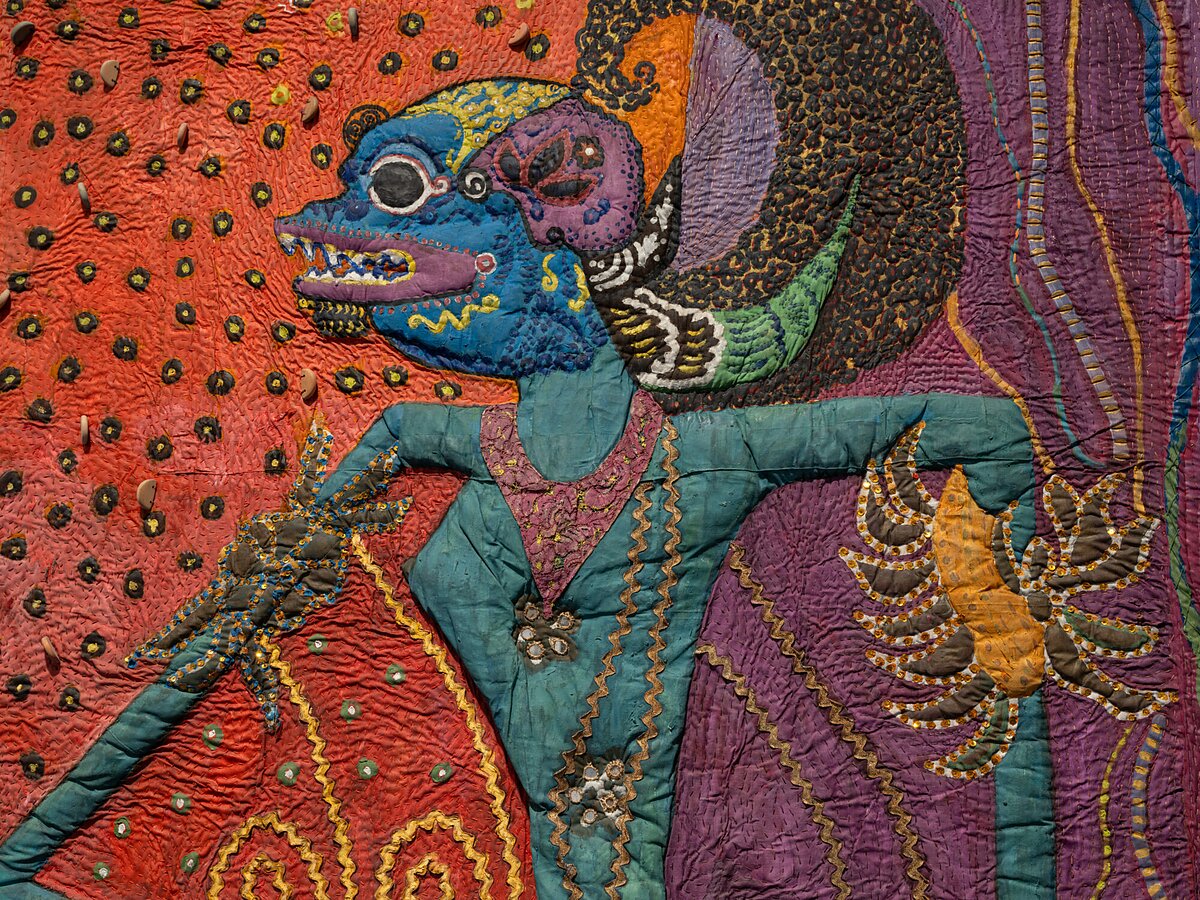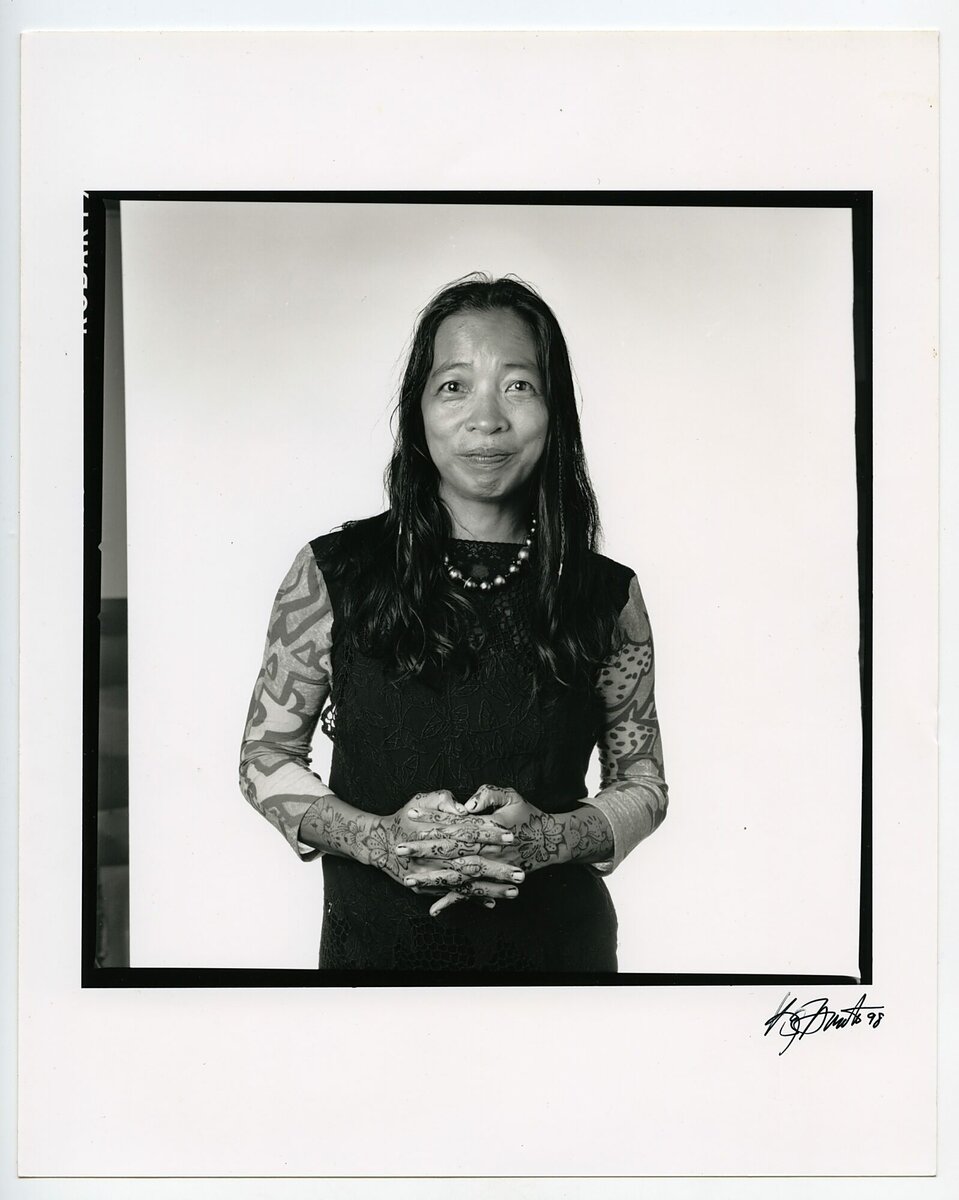Pacita Abad Threaded Together Bold Solidarities
Tucked away in a corner of MoMA PS1’s third floor exhibition space, a digitally restored interview with the late artist Pacita Abad loops on a small monitor. Practically hidden behind a wall, the eight-minute-long video is so unassuming, one could almost miss it. On screen, Abad, wearing paint-splattered coveralls and surrounded by an eclectic mix of textiles, reflects on how coming to the US changed the entire trajectory of her life: “America sort of gave me my independence. It gave me the freedom to do a lot of things. There was no family—family members to say, ‘Don’t do this, come home early, come home this time.’ And so, in a way, I was free to choose what I wanted to do.” At the time this documentary, Wild at Art (1995), was made, Abad would have been around 49 years old. A parting image of her exuberant smile expresses the confidence of a woman at the height of her career.
Nearly three decades later, the Filipina American artist is finally receiving her due in the posthumous retrospective simply titled “Pacita Abad.” After opening at the Walker Art Center in Minneapolis, then traveling to the San Francisco Museum of Modern Art, the exhibition has arrived in New York City. In the accompanying catalog, which itself is an encyclopedic, 350-page tome, curator Victoria Sung laments that Abad has been “largely overlooked” as a serious figure of contemporary art.
With the intention of righting that wrong, the show’s current iteration features over 50 paintings and works on paper, including her signature trapuntos—many on display publicly for the first time. “Pacita Abad” reveals not only the breadth of the artist’s practice but also an unrestrained style, maximalist in color and texture, that freely traverses aesthetic and cultural borders.
A global perspective is embedded in both the materiality and subject matter of Abad’s work. Trapunto, derived from the Italian word “to embroider,” describes Abad’s technique of combining painting and textiles in her quilt-like canvases. Many reach over eight feet, and some take up nearly the entirety of the gallery walls, from floor to ceiling. The series “Masks from Six Continents” (1990–1993), originally a public commission for the Washington DC Metro, incorporates region-specific trinkets—cowrie shells, buttons, beads, handwoven cloth, ribbons, mirrors, and sequins—into six distinct representations of cultures from Oceania, North and South America, Africa, Asia, and Europe.
During her lifetime, Abad traveled to over 60 countries, where she collected and sourced the fabrics and objects that wound up in her art pieces, while also learning Indigenous techniques and traditions from local craftspeople. Such unrestricted mobility was rare for many women, let alone women of color. Abad appeared cognizant of the unique position and privilege afforded to her. In Wild at Art, speaking to filmmaker Kavery Kaul, an Indian American woman, she said, “Art is for other people. It’s not just for yourself, especially for people like us.”
Her critical eye remains present in the artwork she began making, first in San Francisco, then later when she moved to the East Coast. Borrowing a phrase from an Italian immigrant memorialized at Ellis Island, the painting I Thought the Streets Were Paved with Gold (1991) focuses on the labor of people of color. In it, a dark-skinned woman irons a shirt, another carries a sleeping child in her arms, and a uniformed nurse gazes out at the viewer. Above a food truck, the words “An American Reality” painted in black offers an implicit rebuttal to its counterpart; in If My Friends Could See Me Now (1991), a woman in the foreground crosses her arms while giving a side-eye glance under gold-stitched lettering that reads “An American Dream.” The latter’s placement next to Korean Shopkeepers (1993), capturing an ordinary moment between the titular subjects and a Black customer in response to the 1992 Los Angeles Uprisings, alludes to the complicated experience of racial minorities in America.
Above all, Abad’s passion for color stands out in the art she left behind. Life in the Margins (2002), made two years before her death, presents an abstract tessellation of bold prints and painted cloth, suggestive of diverse origins. The artist’s nephew Pio Abad considers her body of work to be an “archive of the Third World,” which takes on added meaning in light of how meticulously her own estate has been able to preserve and share it. “Pacita Abad” asserts the legacy of an artist, an immigrant, and a woman eager to engage with the world, even if that world was not yet ready for her.
—Mimi Wong is a writer based in New York. For her work engaging with contemporary art by artists from the Asian diaspora, she was awarded the Andy Warhol Foundation Arts Writers Grant. She is Editor-in-Chief of the literary magazine The Offing and a part-time lecturer at Parsons School of Design.




